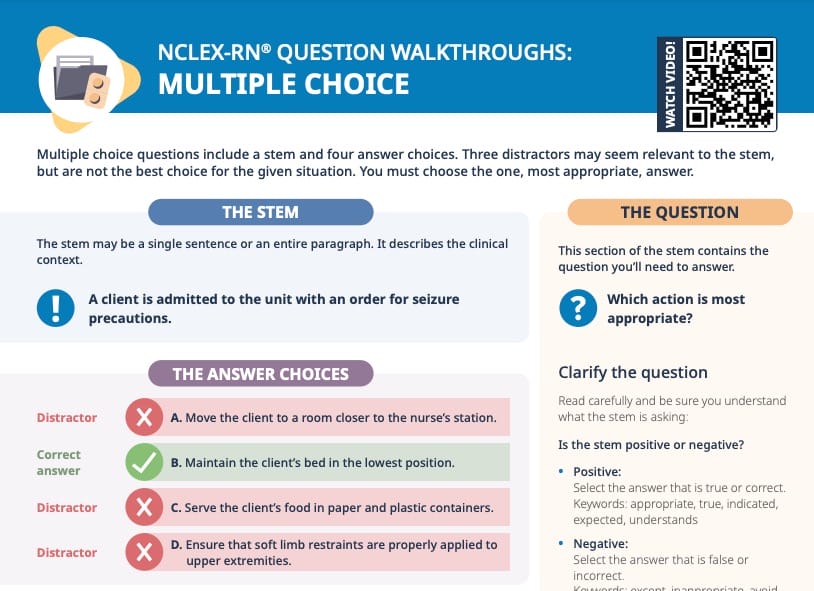Analyze the stem and categorize the question
“A nurse has been given reports on four clients. Which client is at the greatest risk for decreased oxygenation?”
Rephrase the question in your own words
“I have four clients with different conditions and history. Which one of those clients is most likely to experience decreased oxygenation?”
Recognize what type of question you’re dealing with
You’re getting four clients and the question asks to pick one, which tells you that you are dealing with a multiple-choice question about prioritization. Which client is at the greatest risk for decreased oxygenation?
Prioritize the answer choices by comparison
Tip: With prioritization questions, it makes sense to start with picking any one of them and then comparing the others to the one you picked. Are they more or less of a priority?
C. An adolescent who smokes several cigarettes a day
Smoking several cigarettes a day certainly can affect oxygenation. So, since we cannot immediately rule this one out, this is a suitable answer to choose as a starting point to compare the others to.
Tip: Whenever age is mentioned in a question stem, it probably matters. So, keep in mind that this is an adolescent.
B. A middle-age client who has a history of leukemia
Oxygenation is related to red blood cells, leukemia is an issue with white cells. So, there is no direct issue with oxygenation for this client, and their risk is lower than the comparison client – the adolescent who smokes several cigarettes per day. This answer choice can be ruled out.
A. An older adult client who takes hydrocodone twice a day
An older person taking this medication should spark the question: Does it have an impact on respiration? The answer is yes: Hydrocodone is an opioid, which can decrease respiratory rate and depth.
Since the person takes the medication twice a day and also is an older client, the risk of decreased oxygenation is judged as higher than with the smoking, but much younger, adolescent.
So, the leukemia patient and the smoking adolescent are ruled out now, and the new comparison item is the new front runner: the older client taking hydrocodone.
D. A middle-age client who has vomited three times in the last hour
There is no information here about the client having aspirated, being unconscious, or any other additional complications of vomiting that could cause problems with oxygenation. So, as is, this client is at less risk of decreased oxygenation than the older client taking hydrocodone, and answer D can be eliminated.
This leaves answer A as the correct answer choice.
Related videos
Double-check
Go through the answer choices one more time, comparing each one to the one you chose as your final answer, making sure you still agree with your prioritization.
Tip: While double-checking your answer choice is important, don’t fall into the trap of second-guessing yourself. Just follow your thought process one more time and make sure you have not missed anything, then confidently move on to the next question.
